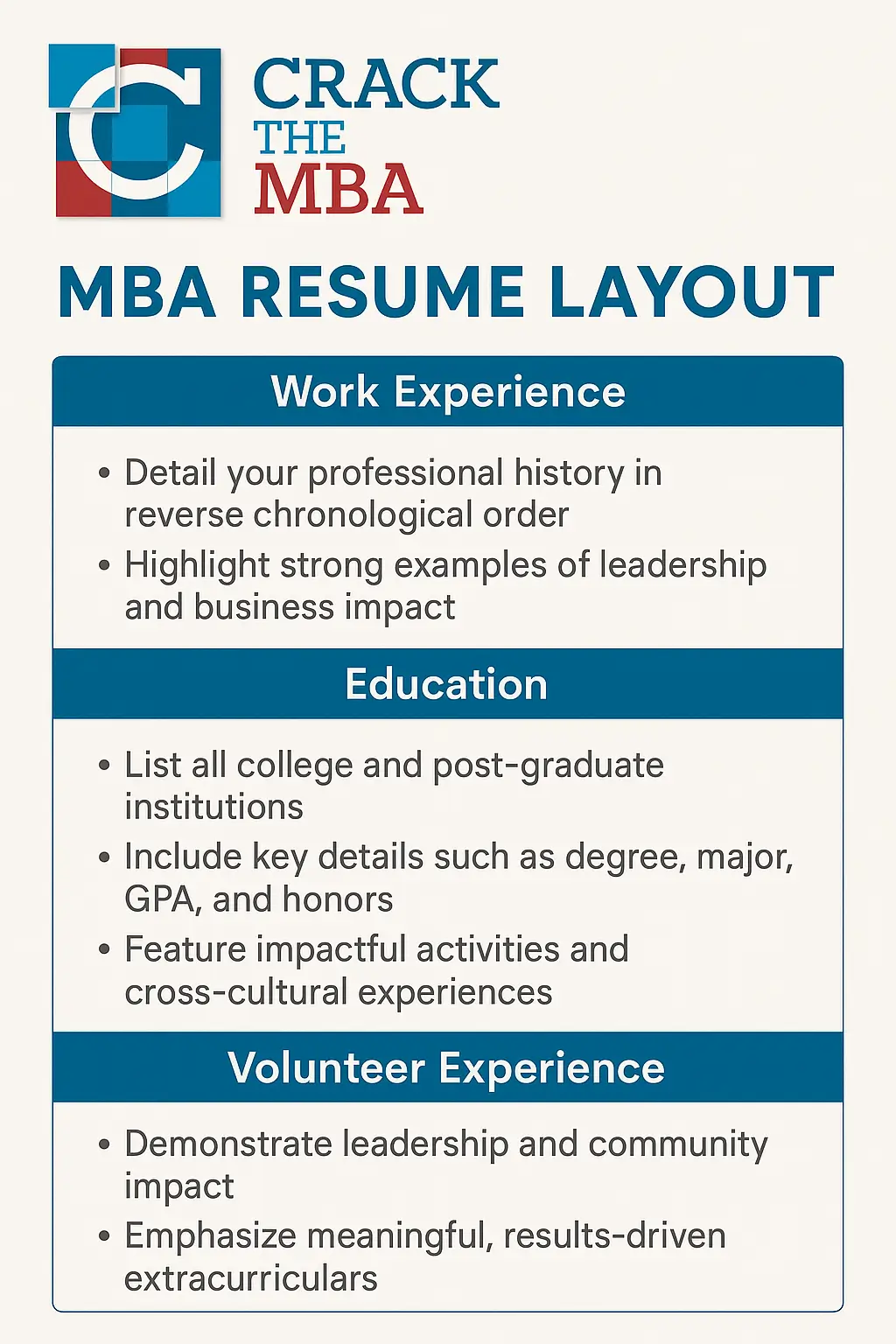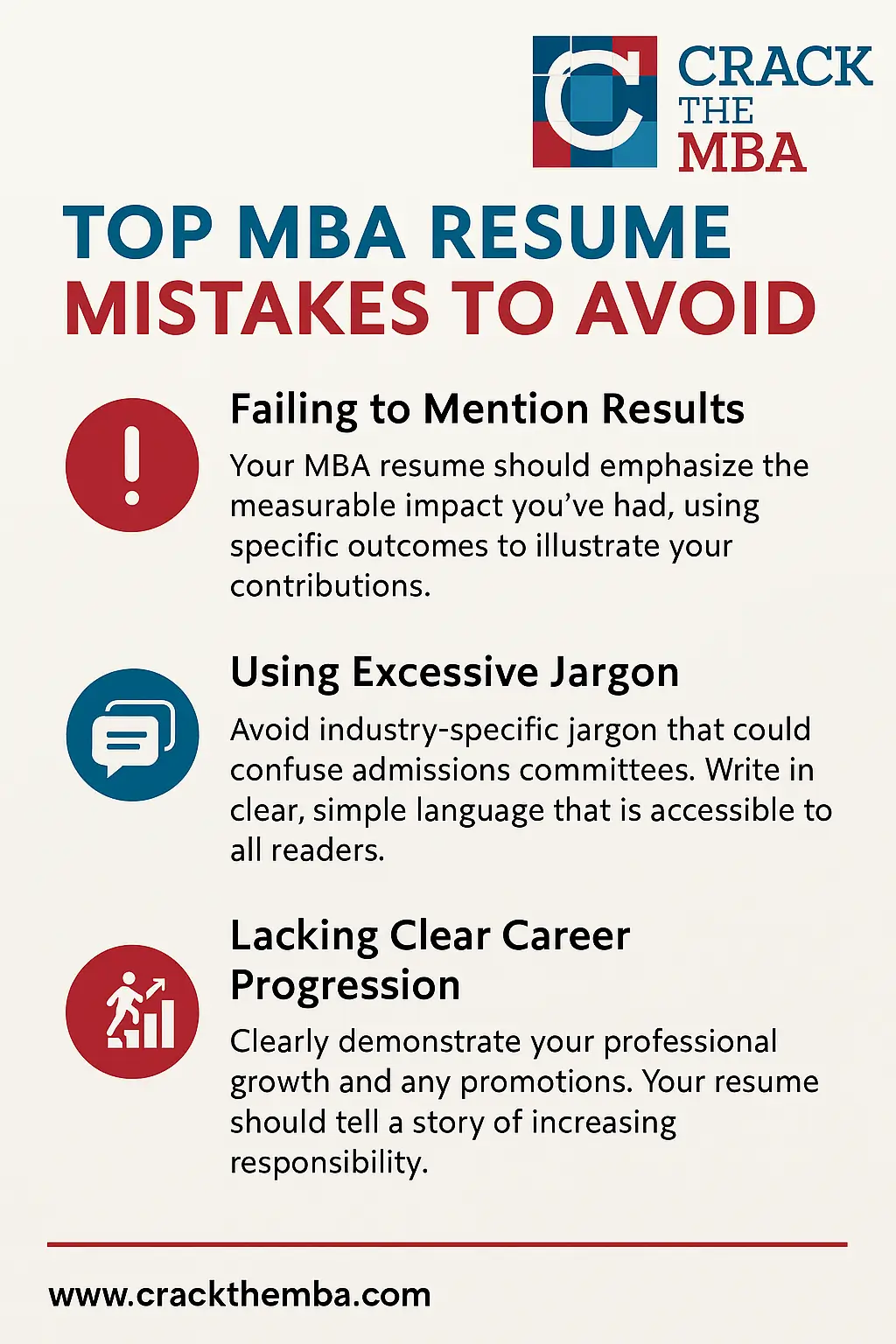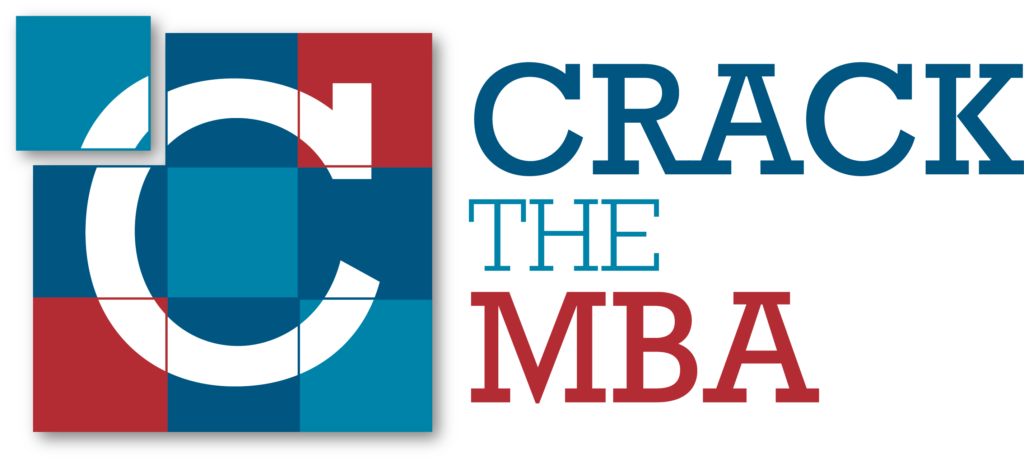How to Write a Standout MBA Resume (With Examples & Expert Tips)
The key to getting into your dream business school? A resume that doesn’t just inform, it impresses. Your MBA resume is more than a summary of your professional background; it’s a strategic document that highlights the hard and soft skills you’ve gained in the corporate world, and how those skills will contribute to the classroom and community at your target MBA program.
Top schools like Harvard, Stanford, Wharton, INSEAD, and LBS receive thousands of applications every year. In such a competitive landscape, a well-crafted MBA resume can set you apart, even before the admissions committee reads your essays.
But what exactly should go on your MBA resume? Should it look different from a job resume? How long should it be? What if you don’t have traditional leadership roles yet?

In this guide, you’ll learn how to build an MBA resume that showcases your achievements, communicates your potential, and gives you a competitive edge no matter your industry or experience level. Whether you’re an early-career applicant or a seasoned professional, these tips will help you create a resume that gets noticed and gets you in.
What is an MBA resume, and how is it different from a job resume?
At first glance, an MBA resume may look like a typical job resume, but in reality, it serves a very different purpose.
A job resume is designed to show recruiters that you have the technical skills and qualifications needed to perform a specific role. It often emphasizes domain expertise and functional capabilities (e.g., Python for analytics, Excel for finance, etc.) to prove you’re the best fit for a narrowly defined job description.
In contrast, an MBA resume is crafted for an admissions committee, not a hiring manager, and its goal isn’t to show you’re qualified for a job, but that you have the potential to succeed in business school and beyond.
Key Differences:
- Emphasis on Leadership & Impact: Rather than focusing on tasks or job responsibilities, an MBA resume highlights leadership, initiative, teamwork, and measurable outcomes.
- Broader Evaluation Criteria: MBA applicants come from diverse professional backgrounds, so there’s no one-size-fits-all skill set to “optimize” for. Instead, your resume should communicate how you’ve created value, influenced others, and grown as a professional.
- Personal and Professional Story: Unlike a job resume, which is strictly professional, an MBA resume may also include personal achievements, community involvement, or extracurricular leadership — areas that showcase your broader impact and well-roundedness.
- Human Review vs. ATS: MBA resumes aren’t read by machines or applicant tracking systems (ATS). They’re reviewed by admissions officers who are trying to get to know you. That’s why clarity, structure, and narrative flow matter just as much as content.
An MBA resume typically covers your full journey since undergrad, including your education, work experience, leadership roles, key accomplishments, and community contributions. It should fit on one page, be easy to scan, and offer a compelling snapshot of your candidacy, one that sparks interest and sets the tone for the rest of your application.
What makes the MBA resume important?
Your MBA resume is one of the most critical components of your application — and often the very first document that admissions committees review. Think of it as a snapshot of your career, achievements, and leadership potential. It introduces your candidacy in a structured, fact-based format and lays the groundwork for the rest of your application.
Here’s why your MBA resume plays such a pivotal role:
1. It’s the First Filter in the Application Review Process
Before diving into your essays, short answers, or recommendations, admissions officers often look at your resume to get a high-level view of your background. It helps them assess your:
- Career progression
- Industry experience
- Impact and accomplishments
- Geographic and functional exposure
2. It Highlights Key Achievements
Your resume quickly communicates your professional milestones, including job titles, promotions, major contributions, and quantifiable results. It gives the admissions team a clear sense of what you’ve done and how you’ve added value.
3. It Demonstrates Communication Skills
An effective MBA resume isn’t just about listing roles, it’s about communicating clearly and concisely. Admissions officers use it to assess how well you can summarize your experiences, structure information, and present your story, skills that are crucial for business school and beyond.
4. It Signals Leadership Potential
MBA programs look for future leaders. Your resume is an opportunity to reflect your leadership trajectory, whether through managing teams, driving initiatives, or influencing cross-functional outcomes.
5. It’s the Foundation for Your MBA Interview
If you’re invited to interview, your resume becomes even more important. Most MBA interviews are “blind”, meaning the interviewer has access only to your resume, not your essays or application form. That means your resume essentially shapes the conversation. A clear, accomplishment-driven resume makes it easier for interviewers to ask insightful, relevant questions and for you to steer the discussion toward your strengths.
Now that you know what an MBA resume is and how important it is in getting an admit, let’s talk about how to format and create one.
MBA resume format
A clean, professional format is just as important as the content of your MBA resume. Admissions committees review thousands of resumes, so you want yours to be easy to read, well-organized, and polished.
Here’s how to format your MBA resume for maximum clarity and impact:
Length
- Keep it to one page. This is the standard for most MBA applicants, especially those with less than 10 years of experience.
- Use a second page only if you have extensive leadership roles, global experience, or over a decade of professional work, and only if the second page adds value.
Font Type & Size
- Choose professional, easy-to-read fonts like Arial, Times New Roman, Verdana, Tahoma, or Helvetica.
- Use:
- 10–11 pt font size for body text
- 12–14 pt font size for section headings
- Line spacing of 1.0 or 1.15 for clean readability
Margins
- Maintain margins of at least 0.5 inches on all sides to ensure your content doesn’t feel cramped and prints cleanly across devices.
Color Scheme
- Stick to black or dark gray text on a white background. Avoid bright colors, logos, or decorative elements. Business schools prefer a formal, understated style over a flashy one.
File Type
- Always save and upload your resume as a PDF. This preserves your formatting across platforms and devices and avoids inconsistencies in spacing or layout.
Do you want to create an impressive MBA resume?
At Crack The MBA, we have helped hundreds of students get into top MBA programs around the world. We would be happy to help you too. Schedule a consultation with us today to learn more about how we can help you get into your dream school.
MBA Resume Layout
A strong MBA resume layout ensures your achievements are easy to follow, your strengths are clear, and your application makes a strong first impression. Admissions committees often scan hundreds of resumes, so layout matters just as much as content.

Here’s how to structure your MBA resume for maximum readability and impact:
1. Contact Information
Place this at the top of your resume. Include:
- Full name
- Phone number
- Professional email address
- LinkedIn profile (optional but recommended)
- City and country (full postal address is unnecessary)
2. Work Experience
This is the most important section of your resume, especially if you have more than 2–3 years of experience. It should occupy the majority of the page and be formatted in reverse chronological order.
For each role, include:
- Company name, location, job title, and dates of employment
- 2–6 bullet points focusing on outcomes, not just responsibilities
- Use strong action verbs and quantify results where possible
Example:
ABC Corporation – Mumbai
Senior Analyst | June 2020 – Present
- Led a team of 5 analysts to optimize customer segmentation, resulting in a 22% increase in engagement
- Designed and implemented a pricing strategy that improved margins by 14%
- Created executive dashboards using Tableau for real-time performance tracking
3. Education
List your degrees in reverse chronological order. Include:
- University name and location
- Degree and major
- Graduation month and year
- GPA (if strong), honors or distinctions
- Key extracurricular roles or academic highlights
Example:
University of Delhi – Delhi, India
B.Com (Hons) | Graduated May 2018 | GPA: 3.85
- President, Investment Club
- Completed summer program in Finance at LSE
Tip: There’s no need to include high school information unless it’s highly relevant or exceptional.
4. Extracurricular Activities & Volunteering
This section showcases your passions beyond the workplace and your potential contributions to the MBA community. Focus on leadership, initiative, and sustained involvement.
Example:
Volunteer Mentor – Teach for India | 2021 – Present
- Mentored 15 underprivileged students in math and science
- Organized a city-wide STEM competition attended by 200+ students
5. Additional Sections (Optional)
If space allows, you can include sections like:
- Certifications (e.g., CFA Level I, PMP)
- Languages (with proficiency level)
- Technical Skills (e.g., Python, SQL, Power BI)
- Interests (only if they are unique and conversation-worthy)
Do you want to create a resume that impresses the MBA adcom?
At Crack The MBA, we have helped hundreds of students get into top MBA programs around the world. We would be happy to help you too. Schedule a consultation with us today to learn more about how we can help you get into your dream school.
Top MBA Resume Mistakes to Avoid
Even strong applicants can lose valuable ground due to common resume pitfalls. To stand out in a competitive MBA applicant pool, avoid these frequently seen MBA resume mistakes that can dilute the strength of your profile.

1. Not Highlighting Results or Outcomes
One of the biggest mistakes MBA applicants make is focusing on responsibilities rather than results. Admissions committees want to see quantifiable impact — how your work made a difference to the organization, team, client, or business outcome.
Instead of saying:
“Responsible for managing client accounts,”
say:
“Managed 15+ client accounts, leading to a 25% increase in client retention YoY.”
Always pair your actions with measurable results. This approach not only shows what you did but also how well you did it — a key differentiator in top-tier MBA applications.
2. Using Too Much Industry Jargon
Your resume isn’t being read by technical experts from your industry; it’s being evaluated by generalist admissions officers who review candidates from a wide range of professional backgrounds.
Avoid:
- Niche abbreviations
- Highly technical terminology
- Unexplained acronyms
Instead, write in clear, accessible language that anyone can understand. Your bullet points should clearly outline the situation, your actions, and the results, without requiring deep subject matter knowledge.
3. Failing to Show Career Progression
A standout MBA resume clearly communicates professional growth. Whether you’ve earned formal promotions or taken on increasing responsibilities, your resume should illustrate that you are on an upward trajectory.
If you’ve been promoted, make that visible by listing roles and timeframes separately. If not, show how the scope of your work evolved, or how you’ve grown in responsibility, complexity, or leadership.
Admissions committees are not just looking for competence, they’re looking for momentum. Your resume should convey that you’re not standing still.
Final Thoughts
Your MBA resume is more than just a list of past jobs; it’s a strategic document that gives admissions committees a snapshot of your professional journey, leadership potential, and readiness for business school. A well-crafted resume can often be the deciding factor in a competitive applicant pool, especially at top schools like Harvard, Wharton, or Stanford.
Remember, every line on your resume should add value. Focus on results, highlight growth, and tailor your resume to reflect the qualities that elite MBA programs look for: impact, initiative, and upward momentum.
So take the time to refine your MBA resume and don’t treat it as an afterthought. Instead, treat it as your first pitch to the admissions committee: a clear, confident, and compelling story of who you are and why you belong in a top business school.
As part of our resume service, we give you expert advice on how to craft a resume that highlights your academic and professional accomplishments, leadership experiences, and the impact you created in your organization(s) or community. Fill out this form to get started.
FAQs About the MBA Resume
1. How long should an MBA resume be?
Your MBA resume should be one page long. Only candidates with 10+ years of work experience should consider a second page — and even then, only if absolutely necessary.
2. Is an MBA resume different from a job resume?
Yes. A job resume focuses on technical skills and role-specific competencies, while an MBA resume emphasizes leadership, impact, and professional growth. Admissions committees want to see potential, not just performance.
3. Should I include my GPA on my MBA resume?
Yes, if it is above average (typically 3.5+ on a 4.0 scale). Including honors or academic awards is also encouraged. If your GPA is lower, you can offset it with a strong GMAT/GRE score or relevant coursework.
4. What font and format should I use for my MBA resume?
Use clean, professional fonts like Calibri, Arial, or Times New Roman, in 10–11 pt size. Keep margins at 0.5″–1″, maintain consistent formatting, and save your resume as a PDF.
5. Should I include high school information?
No. Business schools are not interested in your high school record unless it’s exceptionally relevant or unusual. Focus on experiences after high school, especially from college onward.
6. How should I list my extracurriculars or volunteer experience?
List only high-impact, meaningful activities. Highlight your leadership, commitment, and results. Avoid long lists of passive involvement — quality beats quantity.
7. What should I avoid in an MBA resume?
Avoid vague responsibilities, excessive jargon, overused buzzwords, and dense paragraphs. Instead, use clear bullet points that showcase actions and measurable outcomes.
8. Can I tailor my MBA resume for each school?
Yes. While the core structure stays the same, you can slightly tweak your resume to align with each school’s culture, values, and leadership traits they prioritize.
Author
Related Posts:
Recent Posts
Archives
Ready for Expert Guidance?
Get personalized support to craft your winning MBA application.
Schedule Free Consultation






